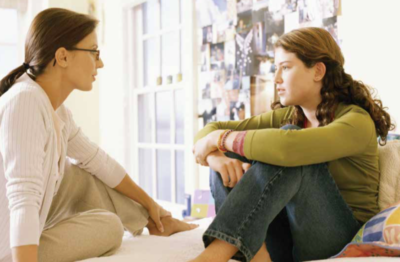
Bad News: How To Help Your Kids And Yourself
By Jessica Park
Thirty years ago, if you wanted to catch up on the news, you read a daily paper or watched a nightly newscast. Today, the news catches up with us through 24-hour news channels and social media feeds. And most of it seems to be bad news.
Rob McGavock, a licensed professional counselor and manager of Boone Hospital Center’s Employee Assistance Program, says that our bad news fixation isn’t a new trend; it’s human nature. Because we once lived in a constant survival mode, our minds have adapted to spot and avoid danger. This tendency can make us focus on negative situations, even when we’re not really in danger.
While it’s good to stay informed of current events, a steady stream of bad news and graphic images can make you feel anxious, helpless or pessimistic.
This is especially true of children, who pick up or overhear stories from TV, family or friends. Children usually think about news stories in relation to themselves. They may lack context to understand why a tragic event occurred or to know if what they’ve heard is true. Young children often worry that similar harm might come to them or their families. Too much bad news may cause some children to develop a negative view of the world as a scary place.
How Do You Talk To Your Children About Bad News?
While the details depend based on the story and your child’s age and comprehension, many mental health professionals recommend the following:
• If you can, talk to your child first, especially if you they are likely to hear about it from others.
• Find out what your child knows if they seem upset. Ask them what they’ve heard or seen and what they’re feeling. Let them know that it’s good to talk about their upset feelings.
• Explain the news story simply and in an age-appropriate way. Know your child and what they can handle. Unless your child asks questions, it’s not necessary to go into detail. “It is fine to keep up on various trends in the news without taking huge gulps of it every day,” McGavock says. He adds that “while our human minds can get hooked into the drama of following bad news, too much drama inevitably makes us feel worse.”
• Reassure your child that he or she is safe. Children can feel relieved to know an event happened very far away or to be told what you and others do to keep them safe. Do something as a family. “Regular, involved and fun time together as a family is one of the very best ways to help a child feel secure,” McGavock says.
• Disconnect from your constant news feed. Limiting your own exposure can help you and your child. Graphic footage on the news has been shown to make adults feel anxious. Visit your favorite news sites once a day instead of subscribing to ongoing feeds.
• Watch for signs of stress in your child, like changes in mood or appetite, trouble sleeping, or difficulty concentrating on schoolwork. If these changes last for more than a week or two, talk to your pediatrician.
• When a news story has your child’s attention, follow the news with them. If needed, limit their exposure to news stories with graphic images. “Explain that, unfortunately, many people give more attention to bad news than good news,” McGavock advises. “They haven’t learned this yet. Tell your children that there is actually a lot more good news than bad news in the world. Share examples of good news and how people support one another through hard times.”
• If your child wants to help, look for or suggest things your child can do, such as donating items, raising money, praying, volunteering, or sending a card or letter.